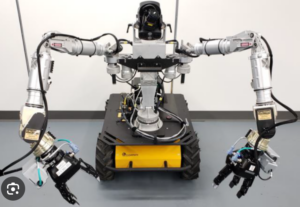Researchers at the University of Bristol have developed a robot whose hands have a level of tactile sensitivity practically similar to that of humans.
The robot uses artificial intelligence to perceive the environment and thus manages to handle objects more efficiently. In the future, such robotic systems can be used, for example, to pick fruit or to create tactile sensitivity similar to real organs for artificial limbs.
According to Yijiong Lin, one of the authors of the project, with their Bi-Touch system, it is possible to easily train AI agents in a virtual world in a few hours and then directly apply them to the real world without additional training. “The tactile bimanual agent can solve tasks even in the face of unexpected disturbances and gently manipulate delicate objects,” Lin noted.
Simultaneous two-handed action with tactile feedback is key to human-level robot dexterity. However, this topic has been less studied than single-handed systems. This is partly due to the lack of suitable hardware and the complexity of designing efficient controllers.
The new robot learns bimanual skills through Deep Reinforcement Learning (Deep-RL), one of the most advanced techniques in the field of robot learning. It is designed to teach robots to do things by letting them learn by trial and error, similar to training a dog with rewards and punishments.
Source: Science Daily

